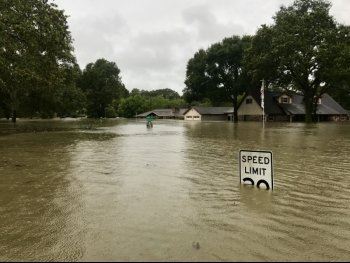Storm spotters and weather services have gone haywire over the last few days, as Missouri grapples with some of the highest levels of rainfall ever witnessed in over 131 years of recorded weather patterns. On Monday, a major flood warning was put in place by the National Weather Service, and it is expected to be active through the next five days for the Kansas City area.
According to weather reports, rural Clay County has already been flooded with well over 9 inches of rapidly moving water, and the Kansas City metro area has seen up to 12 inches in some areas. Additionally, there is a pervasive risk of river and creek overflow in most areas of northwestern Missouri, and the risk of a tornado cannot be ignored either, as high velocity winds continue to move throughout the state.
 Flooding can be incredibly dangerous, both to individual safety and to high-value property like homes and cars. Many people panic in the face of flooding, unsure how to handle the swell of fast-moving water. At Dipasquale Moore, we want to provide you with a few safety tips in light of the current flooding risk. In this post, we’ll touch on a few ways to protect your belongings and family during this serious weather event.
Flooding can be incredibly dangerous, both to individual safety and to high-value property like homes and cars. Many people panic in the face of flooding, unsure how to handle the swell of fast-moving water. At Dipasquale Moore, we want to provide you with a few safety tips in light of the current flooding risk. In this post, we’ll touch on a few ways to protect your belongings and family during this serious weather event.
How to Minimize Property Damage and Serious Injury During a Flood
- Stay informed over the next few days. It may go without saying, but install a weather or flood preparedness app on your phone and check the alerts as often as possible. Floods are unpredictable and can change very quickly, so it’s important to get advance warning. Additionally, keep your cell phone charged and nearby in case of emergency.
- Assemble evacuation supplies and create an emergency plan. The items for an evacuation kit will vary depending on your family’s needs, but make sure that you have some of the following: insurance documents, required medications, portable non-perishable food items, plenty of water, battery powered radios and flashlights, warm clothes and waterproof bags to carry them, first aid kits, and any pet supplies. You should also discuss an emergency communication plan with everyone in your household, and designate a meeting point in the event of separation during a flood.
- If you live in a house, check your sump pump. A sump pump is usually located in the basement, and helps homeowners protect their property from water damage. If it appears to be malfunctioning, do not attempt to fix it on your own, but rather note the damage and move any valuables to higher ground.
- Elevate electrical items and valuables to a higher floor level if possible. Even low levels of flooding can cause serious risk of injury through electrocution, and can damage your most expensive electrical appliances and valuables. Move them to a higher floor level if you can, and if you only have one floor, make sure they are high off the ground and fully turned off.
- Make sure your car has a full tank of fuel. In the event of a flood, you may not be able to drive on the streets at all. But if there’s any chance you can evacuate on the roads, you will need to have a full tank of gas and/or a fully charged car, as many gas and electrical stations are rendered inoperable during a flood.
- When driving, turn around if you see rising waters. The National Weather Service urges that you “turn around, don’t drown” if you are driving when flood waters start to rise. A mere 12 inches of water can pull a small car away, increasing your risk of drowning or collision with other road obstacles. More than half of all flood deaths occur when people drive into rising waters.
Our personal injury attorneys at DiPasquale Moore hope that you and your family remain safe in Kansas City during this crisis. If you need assistance with a personal injury claim, or with securing fair compensation for valuables damaged in a flood, don’t hesitate to contact us at (816) 888-7500 for a free consultation.



